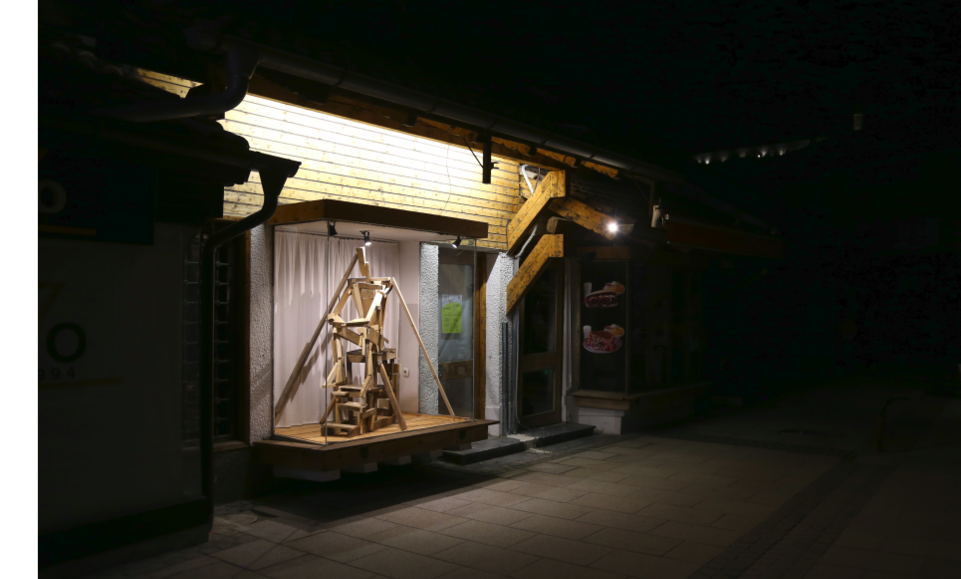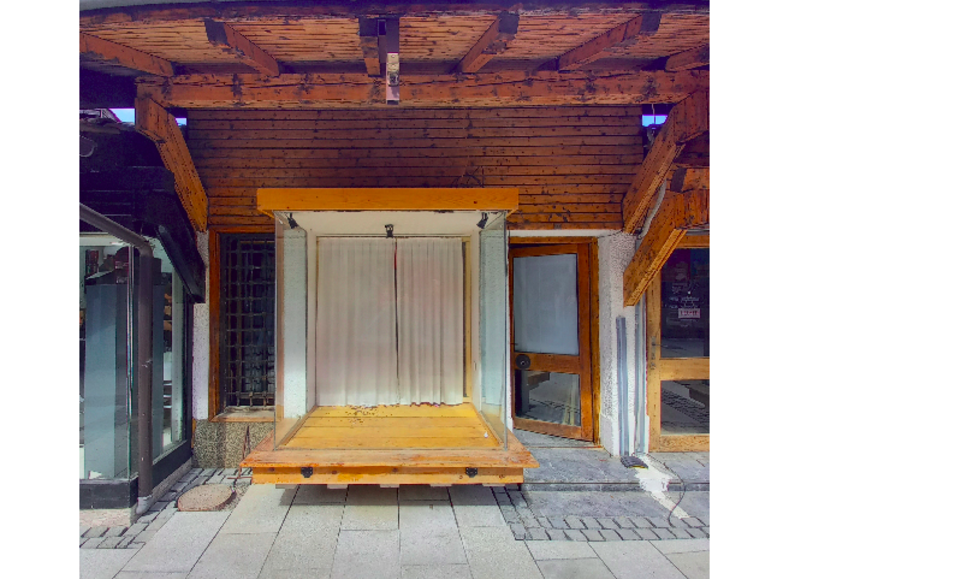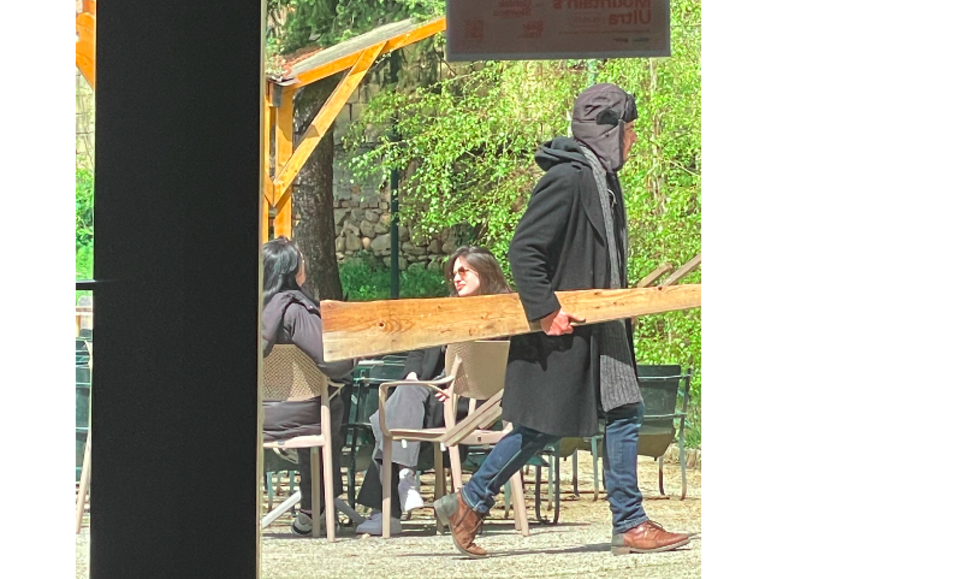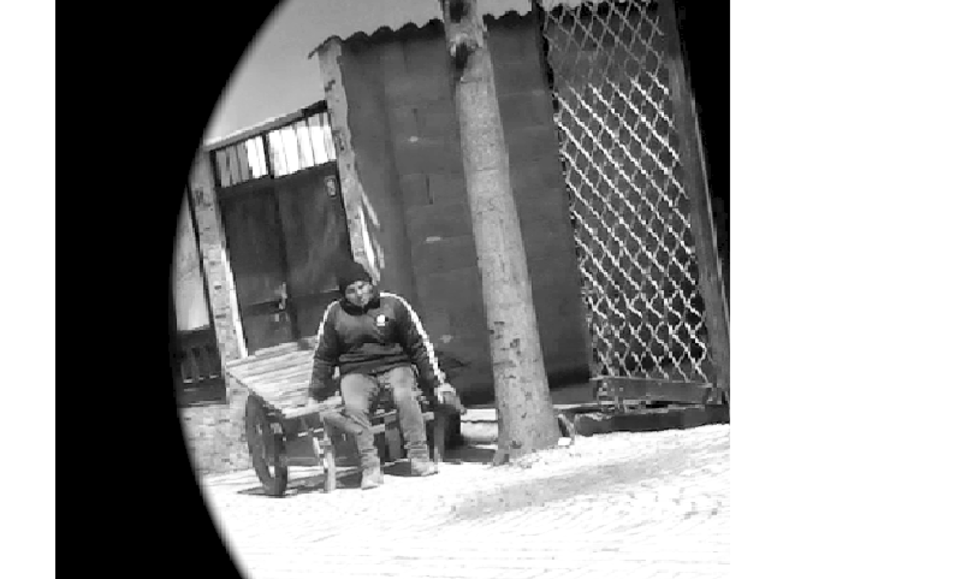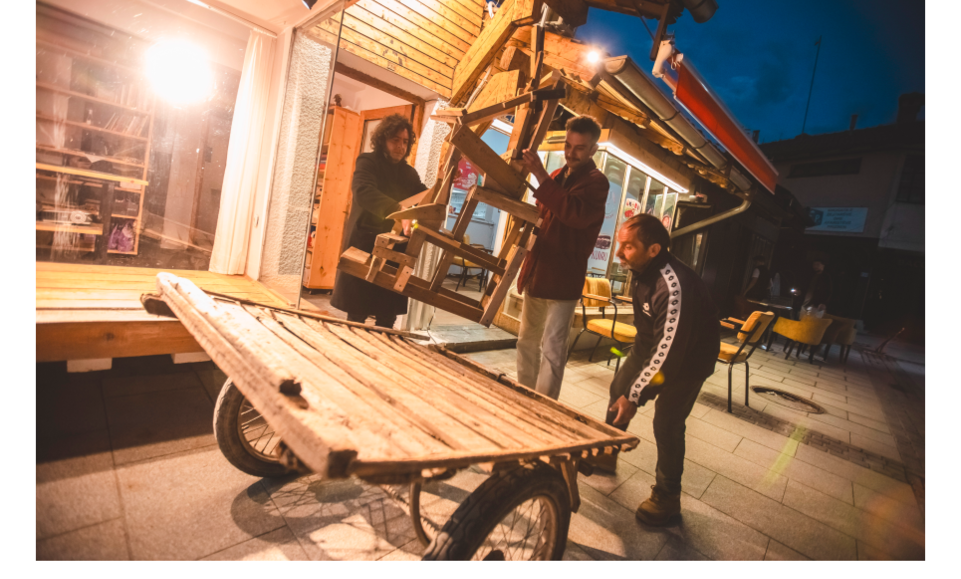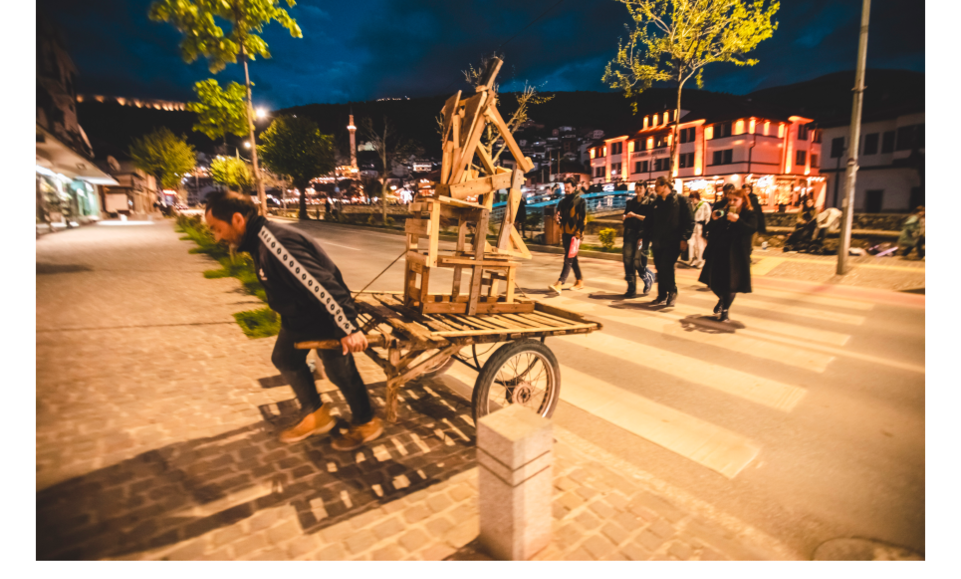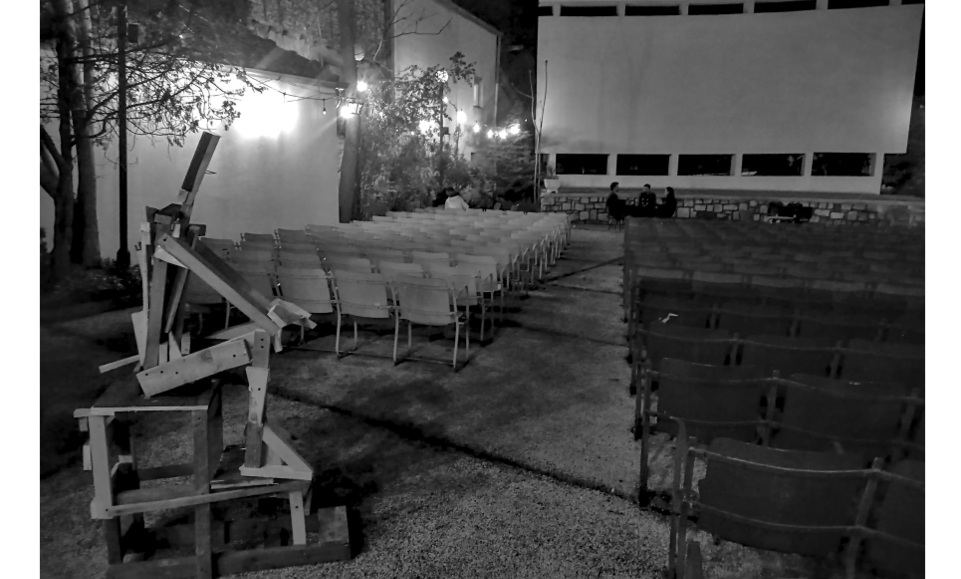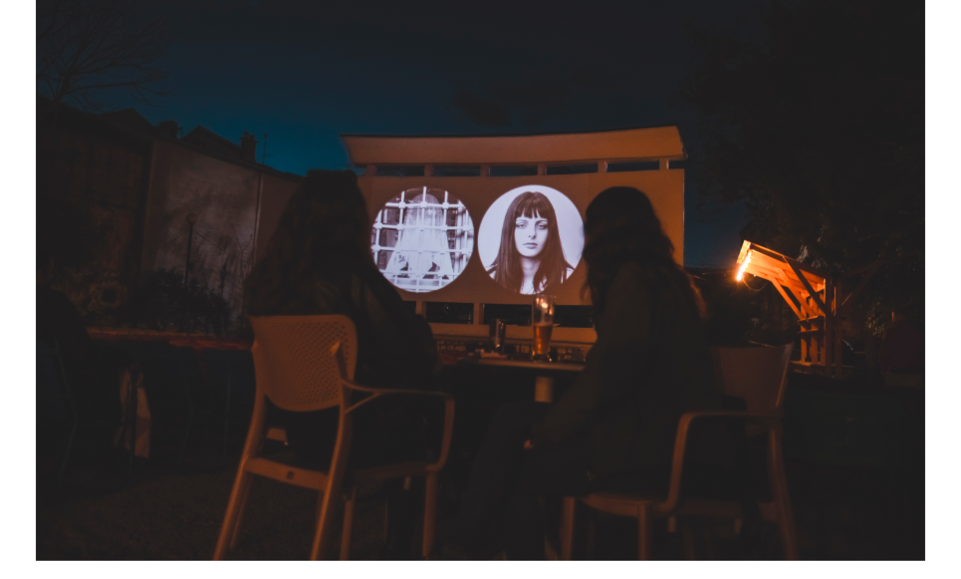The first two weeks of the residency, which I described in my first report, were punctuated by the arising of various possible artistic outcomes to be developed in the second half of it. Those potential projects included an illustrated Albanian lexicon and an exercise on local history painting. What comes next is a description of the two artistic processes which I triggered and we actually developed in Prizren once the date and a tentative format of the public presentation to be carried out at the end was agreed by all of us, the artists-in- residency (Una Štalcar-Furač, Antonela Solenički, Maja Bojanić and me) and the Lumbardhi team.
The final event/exhibition itself was conceived under the sign of collaboration and trans- disciplinarity, it was marked by certain (humble) sense of humor, aspired to be carefully choreographed (it was so) and was designed in accordance with the topics of the residency program itself and the OPE.N project. These formal and thematic aspects determined some of the decisions taken afterwards in order to produce the plans I conceived, developed and displayed in close collaboration with two artists and with the help, support and advice of many persons.
These two parallel endeavors were rooted on a method of engaging, theorizing and representing the time and space coordinates of a certain creative process (what I call a kairotope). They were anchored to my practice (what I know how to do and have done before) concerning procedures, media, materials and scale. The main organization strategy in this model of actuation is keeping a diary (the Prizren one was “written” in video), while the thematic red threads are determined by the material conditions of production pertaining to the researched place/time and the study of history and art histories which address them.
There was another content-wise element at play: the drive to address the cultural sphere, places and production on a local level, due to the requirement of the residency program and offering insights. This aspect governed two choices. One of them concerned focusing on processes more than objects in order to emphasize networks, workers and places (there were objects at the end: this approach could be counter-productive, since one segment of the public can perceive them as contingent, reducing their value as art works in dialogue with specific traditions, functions and aims). The other one was the plan to divert as many funds as possible from the assigned production budget to support local art producers or cultural workers who collaborated with me in the making.
The first project was a video work entitled Let’s take a walk, I will tell you a story about those who died, and we can talk about my art (video, single channel, monochrome, silent, 14’10’). Genealogically speaking, it is part of a series of video works developed since at least 2016 collectively entitled Silent Works. They are artist’s documentary films based on the manipulation of footage from my video diaries, and share a set of immediately recognizable visual and aesthetic features. There is a specificity in this piece, though, and I will extensively quote now a working text in form of a self-interview that I wrote in Prizren for Antonela Solenički in order to clarify it:
What are you doing in Prizren?
I am trying to understand something which I don't know what it is. I feel like that voice in a Leonard Cohen song who sings "I can't forget, but I don't remember what". It's like when you feel you lost something but maybe not and anyway that feeling hangs upon your thoughts and movements. Differently to other occasions in which I have been working in a foreign land, for whatever reasons, my deep ignorance of Kosovo's language, history, traditions and idiosyncratic features annoys me (deep ignorance is not total ignorance, though). And I am very cautious in terms of pretending to be honest or accurate, or even insightful, when it comes to my work, which of course deals with representation. All this could sound terrible, but in fact is liberating instead.
Can you be more concrete about those issues, or topics, which surround or at least point out to that complex which you want to understand?
That "complex" is not Kosovo, or Prizren, and is not the cultural sphere here either, those are superficial things somehow. It has more to do with having a real understanding of persons in their essence, so to say, behind the masks. It is like being a portraitist who can not understand the portrayed person. Some things help, anyway. Films and discussions about films, I have had plenty of them. Some poetry. A friend of mine from South America asked me to compare Prizren with Sarajevo, and I mentioned that people here, contrary to what happens in Sarajevo, do not feel European (neither is the Yugoslav heritage experienced in the same way as in the other countries of the former Yugoslavia, for obvious reasons). Then I found a poem from Azem Shkreli "Europe" ("Mbi Evropë"). It was published in Prishtina in 1981 and the last stanza reads:
Evening. We are in flight.
Beneath us pensive Europe drowses over serious matters
Sleep on wise lady I never bothered
About your whims which were not mine.
In which ways are those considerations articulated in your practice here?Since art deals with uncertainties more than certainties, you are already talking about “research”, in artistic terms. It's more discovering without a script than researching, but there is a method, based on repetition and cyclical thought. (...)
I want to compose a fragmentary system of organic synergies through actual relationships with people which lead to actual movements of objects and the establishment of temporary shelters of artistic creation and collaboration which lead to the composition of images. For instance: I started keeping a video diary, as I often do, and extracting fragments of footage to compose a piece from the series Silent Works (...) This time, I tried to quote or imitate the procedures I applied while working in Belgrade in 2019 composing the piece Sa vodom iz izpranih revolvera. Then I met Karanfile Haxhi, a local young artist who works in Lumbardhi and whose presence reminded me of Luna Đorđević's, who appears in the Belgrade video and essentially sets the tone of it. That's how the process evolved into producing a cryptic (silent) interview with Karanfile, disguised as a video portrait of sorts.
Karanfile and I did not share a common fluid speaking language. Let’s take a walk, I will tell you a story about those who died, and we can talk about my art establishes a cryptic but not obscure dialogue between the performance of Karanfile (who silently take us on a walk through Prizren, tells us a story about someone she knew who died and «talks» about her art) and a collage of fragments of my diaries edited in order to somehow (unlikely) access her narratives (from my experience), and (from the point of view of the intending effect in one of the possible viewers -the one I had in mind) to illuminate them. The work was projected (in loop) for approximately one hour in the open air cinema of Lumbardhi on the day of the final event of the residency. A copy of the work is now kept in Lumbardhi's archive for screening purposes. It made sense to focus on film (or video) production while being a guest of Lumbardhi Foundation, an organization primarily devoted to, and concerned with film and film histories. The other operation/process carried out during the residency period deals with another function of Lumbardhi which goes far beyond from its more evident film-based lineage and film-based activities.
Lumbardhi Cinema is a place where culture in the very basic sense occurs (thinking of Raymond Williams I will call it a place of constant configuration of informal associations). In that sense, it is one (very important) node in the cultural life of the city, a city which lacks cultural infrastructure and keeps very few cultural institutions and even fewer places where art (identified as something different and prior to culture) comes to be articulated. I strongly felt the lack of art in Prizren, especially in the conventional sense of the word: museums, galleries, artist’s spaces (and I hope I did not miss any opportunity to find one). But there was an encounter, and a set of operations done in order to represent the gap, bridge it and think of a potential artistic continuity of my professional doing in Prizren. Because what emerged from an artistic point of view during my stay in that beautiful, old and quite conservative city was intended to be visible, if at all, in a certain future, and charged with memories. Because what I wanted to create had to do with emulating the logic of creating monuments. A logic, however, operating through layers of actions and without a transparent reference.
The encounter was with Somer Şpat, a local artist and cultural worker who, besides dealing with his own artistic practice, co-founded a collective radio which is also a concert/rehearsal/party venue and leads a studio located practically inside another node of the cultural life of Prizren: the café Destill (I must refer here to the insightful observations of Antonela Solenički in her last report). I fell in love with the vitrina of Kurshllus Studio, and I proposed to Somer to use it as a displaying device for an art work produced there during the residency. Eventually, the studio itself became a venue of the final event, and a secondary working base for us the residents.
Waiting Exercises (Acts I & II, and the start of Act III) is the type of critical and non- disciplinary operations which fully represent my practice. The use of the term «act» (intentionally borrowed from Pierre Huyghe) points out to the theatrical (more than performative) character of the whole process, to the central role of calculated temporality in its conception, and to the existence of a script. From another point of view, more narrative, the acts are chapters of a choreography, not carried out for and by people alone, but for and by magnetic forces between people, spaces and objects.
The First Act was developed as a set of small-scale, half-public events based on previous experience on working on wood assemblage-based sculptures and installations. It comprised carrying a range of pieces of discarded wood and temporary-bar-furniture (made of wood) from the back of the stage of Lumbardhi’s open air cinema to Kurshllus, since the wood you will spot in the streets of Prizren has usually a function, no matter how abandoned it looks like, and people are using any type of wood to make fire.
It also included the making of drawings (mostly portraits and preparatory sketches) and research notes (specially on traditional clothing found in two local ethnographic collections), as well as carrying on long conversations and discussions about monuments and the history of the actual monuments erected in Prizren with anybody at hand.
The aim of all this was to facilitate the construction of a (non-)monument, a human-sized sculpture made of assembled pieces of wood which would mimic some informal anarchitectural strategies seen in the streets of Prizren (which are also protagonists of one section of the video). It would as well represent a gesture of waiting: waiting would come as a symptomatic action in contemporary (and sometimes historical) Kosovo in many dialogues, but the main reason for it will be apparent in the Third Act. It would also refer to the powerful image of the stairs, which are profoundly approached in two visual devices which I appreciated being in Kosovo: Adrian Paci’s Centro di Permanenza Temporanea and Agona Shporta's video clip Hape Portën Moj Evropë, shot in Prizren's central bus station. The Act went on with the construction of the sculpture straight on Kurshllus’ showcase, and a brief period (two days and one night) of exhibiting it there. Many people saw it, some commented on it, and some used it (sitting in front of it to drink coffee, for instance). The whole procedure and the piece itself establish strong dialogues with previous works of mine.
The Second Act was staged on 18.4.2025. Kurshllus Studio was designated as the venue where the final event was set to start at 19:00. Organizers, artists, friends and the general public gathered in front of the showcase where the sculpture was displayed. While we were waiting, I asked some people about putting a name on it (it evidently represents a human figure sitting), and Ares proposed «Pazient». At 19:45, Azem came to pick it up, and Somer and I opened the studio and deposited the sculpture on Azem’s two-wheeled, human-powered wooden trailer. I spotted Azem in my first days in Prizren: he would wait, seated on his vehicle in front of Destill, all day long if needed, for someone to require his services. It is relatively cheap and reliable, and very convenient in a city in which many locations are not reachable by car and the municipality carries out garbage collections using horses. Azem took the sculpture on a approx. 220 m journey taking Pushkatarët street down to the river, crossing the “blue bridge” (Ura e Kaltert) and from the other side of Remzi Ademaj street into a short section of Farkëtarët to enter Lumbardhi’s courtyard. He was followed by some of us. It was a procession of sorts, of course, but Azem was simply doing his job, and we had to move the sculpture. We did not invite the public to assist to a performance, and many assistants just stood in front of Kurshllus finishing their drinks. Once in Lumbardhi, we deposited the sculpture somewhere (Azem’s trailer would not pass in between the open cinema’s rows of seats), paid him, thanked him and said goodbye. And the event went on.
But then the Third Act started too. The sculpture will remain in Lumbardhi’s courtyard, but the courtyard (and the whole premises) will go through a process of complete renovation which will start very soon and could last as long as it should (we are in the Balkans). Lumbardhi won’t be for some time (and may never be again, at least in the same way) the place of encounters and cultural cooking we experienced. I will remember it all, and I will wonder how is Pacient doing. Maybe somebody will visit it and document its waiting (and witnessing) position in the new conditions. Maybe some cat will find shelter on it. Maybe somebody will find another name for it. It may be dismantled again, to fulfill some other function or functions. It may be despised, disliked or worshiped. It may disappear, it may resist, it may metamorphose. There might not be an end for this act.
